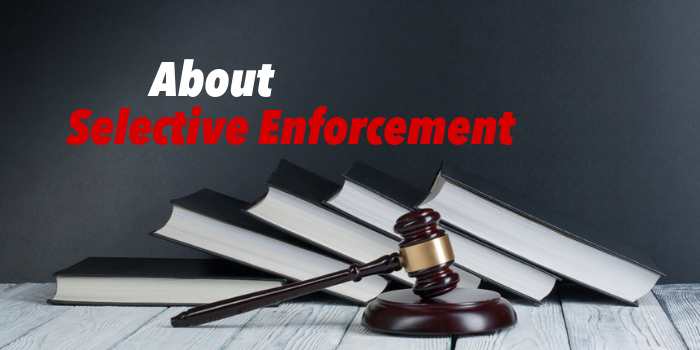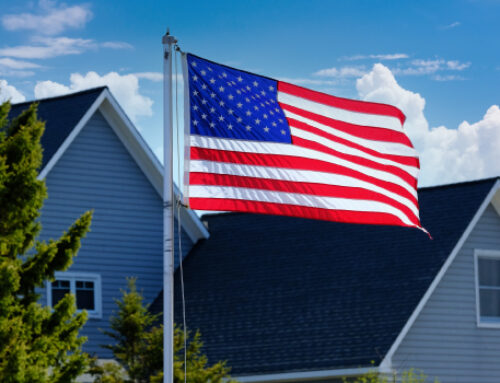Selective enforcement is when a board enforces, or is perceived to enforce, rules against some homeowners and not others. It also occurs when rules are unfairly or inconsistently enforced throughout the community. For example, suppose that there is a rule that all trash receptacles must be properly stored by 6 p.m., but no one on your street gets home from work until after 6 p.m.; however, only one house out of the five receives a violation.
Homeowners’ associations cannot be arbitrary in their enforcement of the community’s rules. It is illegal, whether explicitly stated or otherwise implied. Furthermore, it is extremely important that your HOA avoids selective enforcement so that it doesn’t earn a bad reputation, which could make it hard for homeowners to sell, and therefore, drive down property values.
When Selective Enforcement is a Problem
So, what recourse do homeowners have when selective enforcement occurs in their HOA? Homeowners who feel that their cited violations are unfair or unwarranted need to first consult the governing documents in order to determine whether the citation is, in fact, unfair.
If it seems that the citation was indeed selective, the homeowner should first approach the association’s board to discuss the case. This process is usually done in writing, but the process should be defined in the CC&Rs.
If this doesn’t work, homeowners can plead “selective enforcement” in a court of law. However, this is a costly and lengthy battle. In court, HOAs are generally required to provide documented proof that their citation was necessary to enforce the rule in order to maintain the community. If this cannot be done, the court may side with the homeowner. To bolster their case, the homeowner should be able to provide proof that there have been frequent violations by others and the HOA did not enforce the rules in those other circumstances; this kind of evidence can be tough to produce! In the majority of court cases, the HOA has a solid defense with their CC&Rs, and will almost always win.
Let’s use homeowners, “Mr. and Mrs. Smith”, to illustrate:
Mr. and Mrs. Smith filed a request, per HOA rules, to erect a fence on their property. The HOA failed to respond to the request, so, after waiting a period of time, the homeowners decided to put up the fence anyway. Members of the HOA were aware of the fence going up, but they waited until after the project was completed before citing the homeowners for a rule violation. The Smiths were sure that their defense would hold, since their fence resembled other fences in the neighborhood, it was contained within their property lines, and they had submitted a request. Mr. and Mrs. Smith decided to fight the HOA in civil court, but the HOA was able to default back to the CC&Rs and architectural standards and invalidate the homeowner’s defense. It did not matter that others in the community had broken the rules as well – the HOA decided to pursue this homeowner, for whatever reason, and was able to get a favorable judgment from the lawsuit.
If Mr. and Mrs. Smith had been able to provide photos of multiple other fences in the neighborhood that match the exact description of their own, as well as signed affidavits or witness statements stating that those homeowners never received citations, the court may have ruled differently.
Avoiding Lawsuits
There are steps you can take in order to avoid selective enforcement lawsuits.
First, make sure that when doing rounds to inspect the community for violations, you need to inspect every property equally and fairly, not giving preferential treatment to any one house because of who owns it or, on the flip side, only looking at houses that have had previous violations.
Next, be sure that your community’s CC&Rs are clear and defined. Each rule should be uniquely identified and described in simple, concise language. Resolution steps and/or consequences should also be clearly defined.
Playing Fairly
It is crucial that HOA board members follow a consistent process when it comes to rule enforcement; this will ensure that your community does not get a reputation for selective enforcement. The steps for escalating any issues should also be clearly spelled out so that rule enforcement is consistent from each member of the board and sustainable through any major board changes. All communication between the HOA board and homeowners regarding rule infractions should be standardized to ensure that there is no communication that can be viewed as giving preferential treatment.
Whenever possible, it is also highly recommended that each rule citation includes pictures for additional documentation. Also, be open to communication from homeowners who have been cited for violations; this is a crucial step to avoid lawsuit! Most issues can be handled internally. Be prepared to answer any questions that a homeowner may have. Lastly, follow through on rule infractions promptly; this will reinforce the message of consistency and good communication.







